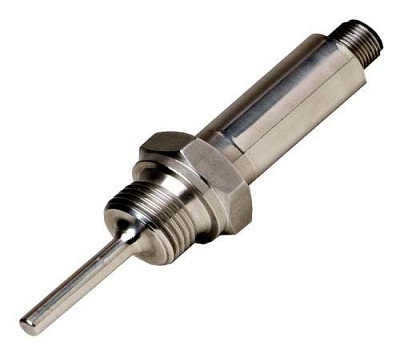
A temperature sensor is a device, typically, a thermocouple or RTD, that provides for temperature measurement through an electrical signal. A thermocouple (T/C) is made from two dissimilar metals that generate electrical voltage in direct proportion to changes in temperature. An RTD (Resistance Temperature Detector) is a variable resistor that will change its electrical resistance in direct proportion to changes in temperature in a precise, repeatable and nearly linear manner. A thermocouple is made from two dissimilar metal wires. The wires are are joined together at one end to form a measuring (hot) junction. The other end, known as the reference (cold) junction, is connected across an electronic measurement device (controller or digital indicator). A thermocouple will generate a measurement signal not in response to actual temperature, but in response to a difference in temperature between the measuring and reference junctions. A small ambient temperature sensor is built into the electronic measuring device near the point where the reference junction is attached. The ambient temperature is then added to the thermocouple differential temperature by the measuring device in order to determine and display the actual measured temperature.